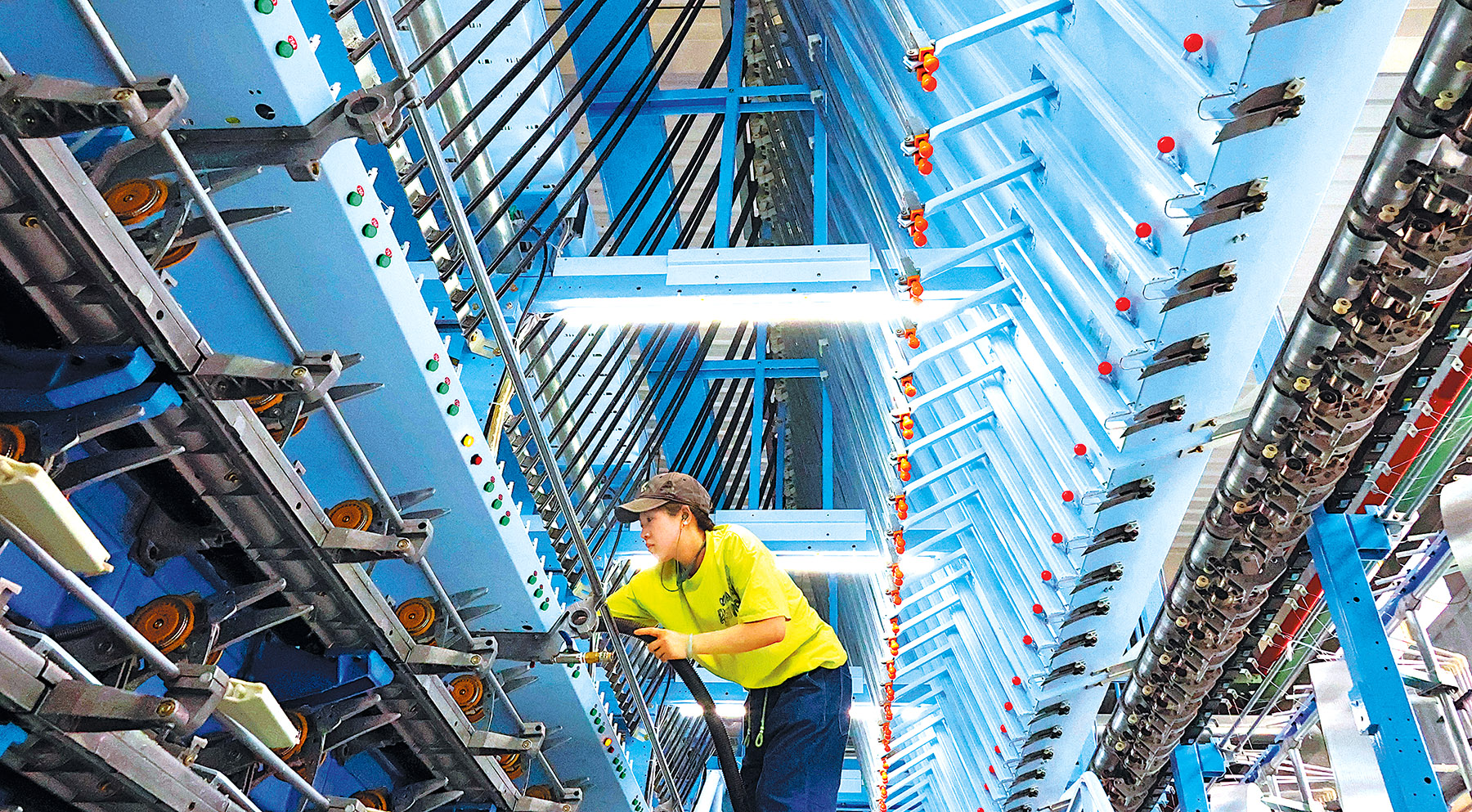Factory output in April tops forecasts, attests to economic strengths despite external headwinds

China’s economic performance held steady against external headwinds, including the United States’ tariff moves, with industrial production exceeding market expectations in April, data released on May 19 showed.
Officials and analysts said that China’s economic fundamentals remain solid, and that the country retains ample policy room and tools to navigate mounting external uncertainties.
With some countercyclical measures already in place and more on the way, analysts believe the nation is well-positioned for a stable recovery throughout the year. Potential policy steps may include additional issuance of ultra-long-term special treasury bonds and an expansion of consumer goods trade-in programs, they said.
According to figures released by the National Bureau of Statistics (NBS), China’s value-added industrial output increased 6.1 percent year-on-year in April, after 7.7 percent growth in March, bettering a forecast of 5.5 percent in a Reuters poll.
“The April activity data shows continued resilience in industrial production,” said Louise Loo, lead economist at British think tank Oxford Economics.
“Export-driven gains in factory output may continue, given China’s manufacturing competitiveness and front-loaded orders, before the end of the 90-day tariff agreement (reached by China and the US),” Loo said.
Wang Qing, chief macroeconomic analyst at Golden Credit Rating International, said China’s macroeconomy remained resilient in April despite the abrupt escalation of tariffs, primarily due to the forceful implementation of countercyclical policy measures this year.
“China’s growth-stabilizing policies, including promoting programs for large-scale equipment renewals and trade-in deals for consumer goods and further supporting major national strategies, while building up security capacity in key areas, have helped support consumption and boost investment,” he said.
According to the NBS data, retail sales increased 5.1 percent year-on-year in April, while fixed-asset investment rose 4 percent during the January-April period.
Wang warned that the impact of US tariffs might weigh on industrial output and dampen confidence in consumption and investment, but said he still expects the Chinese economy to maintain its resilience and continue growing, thanks to the ongoing macroeconomic policy support.
He pointed to the new financial stimulus package, including interest rate cuts, liquidity injections, and targeted funding for consumption and technological innovation, as signs of Beijing’s firm commitment to stabilizing the economy and financial markets amid external pressures.
Fu Linghui, a spokesman for the NBS, said that synchronized macro policies and proactive measures across the board have “bolstered China’s confidence and capacity to meet various risks and challenges”.
“In the next stage, we should adopt more proactive and effective macroeconomic policies, and the focus should be placed on stabilizing employment, enterprises, markets and expectations,” he said at a news conference in Beijing on May 19.
The Chinese economy is expected to maintain a generally stable and steadily improving growth trajectory, supported by multiple favorable factors including a solid recovery foundation, strong stimulus measures, great consumption potential and strong impetus from innovation, Fu added.
Following China’s stimulus measures, Nomura has raised its forecast for the nation’s GDP growth in 2025 to 4.5 percent year-on-year, up from 4 percent expansion projected earlier.
“The truce reached in the US-China trade war is positive for China’s economy, especially for the second quarter, as exporters might try to front-load their shipments before the 90-day pause ends,” said Lu Ting, chief China economist at Nomura.
“On the other hand, retail sales — given the support of the expansion of the trade-in program — have been stronger than we thought they would be in the second quarter,” Lu said.
Looking forward, Xiong Yuan, chief economist at Guosheng Securities, said that more incremental policy steps are likely on the horizon, such as additional issuance of treasury bonds or local government special bonds, expanding the scope of large-scale equipment upgrade and trade-in deals in consumer goods programs, vigorous development of service consumption, and accelerated urban renewal initiatives.
Contact the writer at ouyangshijia@chinadaily.com.cn


